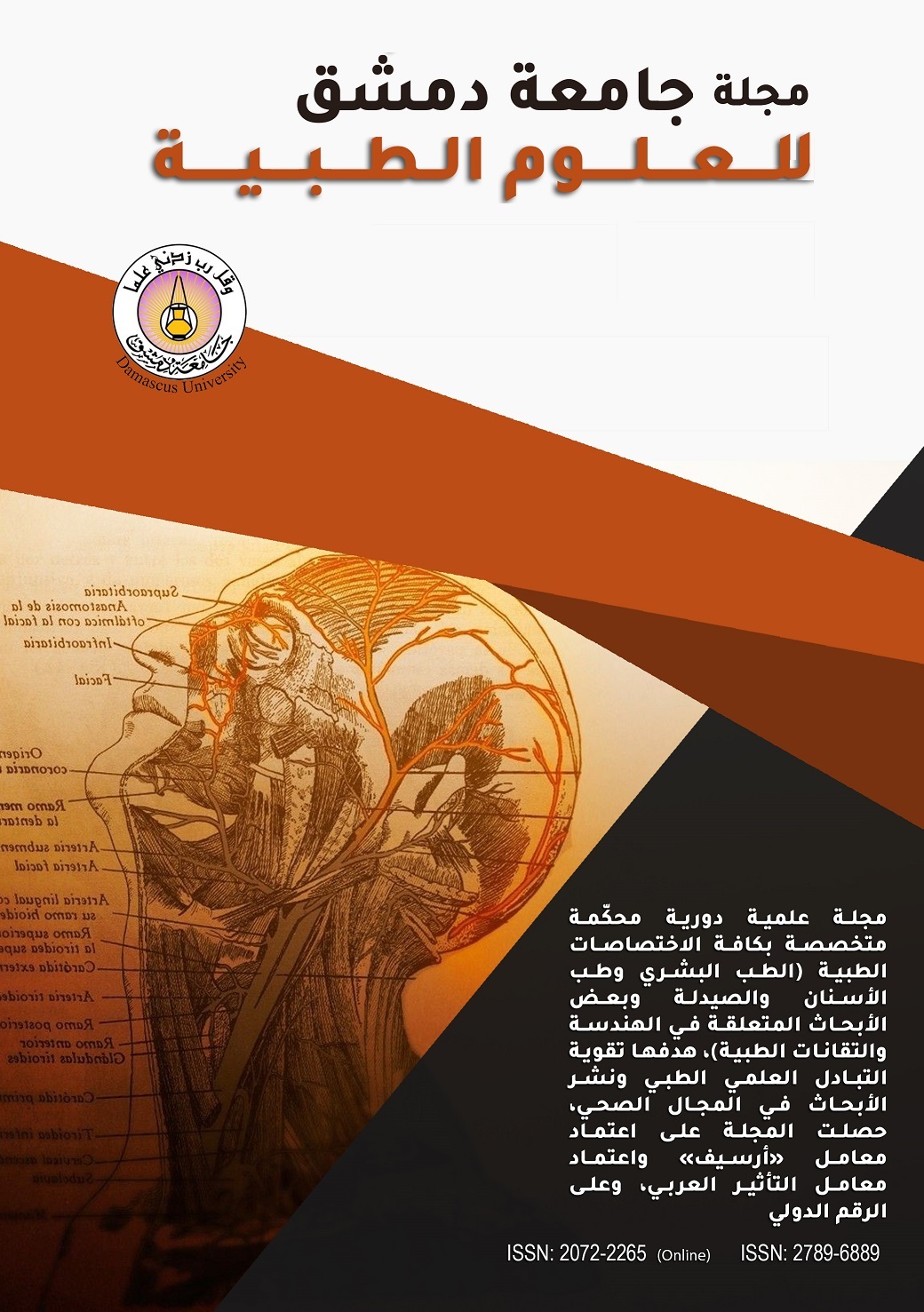Early Placenta Abruption Risk factors and management in the Maternity Hospital of Damascus University
Keywords:
Placental abruption, postpartum hemorrhage, pre-eclampsia, pregnancy outcome, risk factorsAbstract
Background & Aim: Placental abruption remains a major cause of maternal and perinatal morbidity and mortality in developing countries. Little is known about the burden of placental abruption in Syria. This study aimed to explore the clinical characteristics and outcomes of placental abruption.
Materials and Methods: A total of 150 placental abruption cases were collected from Maternity University Hospital, Damascus, Syria between 2018 and 2020. A retrospective study conducted between January 2020 – January 2021 to explore the risk factors for placental abruption, clinical characteristics, and maternal and fetal outcomes.
Results: Vaginal bleeding (79.3%) and abdominal pain (62.7%) comprise the classical symptoms of placental abruption.
Risk factors for placental abruption mainly include preeclampsia (40%), previous placental abruption (34%), previous cesarean section (19.3%), and premature rupture of membrane (12%). Emergency cesarean section was performed in 114 cases (76%) of placental abruption. There was no case of maternal death, but maternal morbidity was considerable, with 26% of postpartum hemorrhage, 20.7% of DIC, and 19.3% of blood transfusion. Adverse fetal outcomes associated with placental abruption include low birth weight (44%), intrauterine death (28.7%), preterm delivery (24.7%) and low Apgar score (below 7) at 5 min (22%).
Conclusion: Placental abruption is life threatening complication of pregnancy and it is associated with poor maternal and fetal outcome if not managed appropriately. Hence early diagnosis and prompt resuscitative measures would prevent both perinatal and maternal mortality and morbidity.

